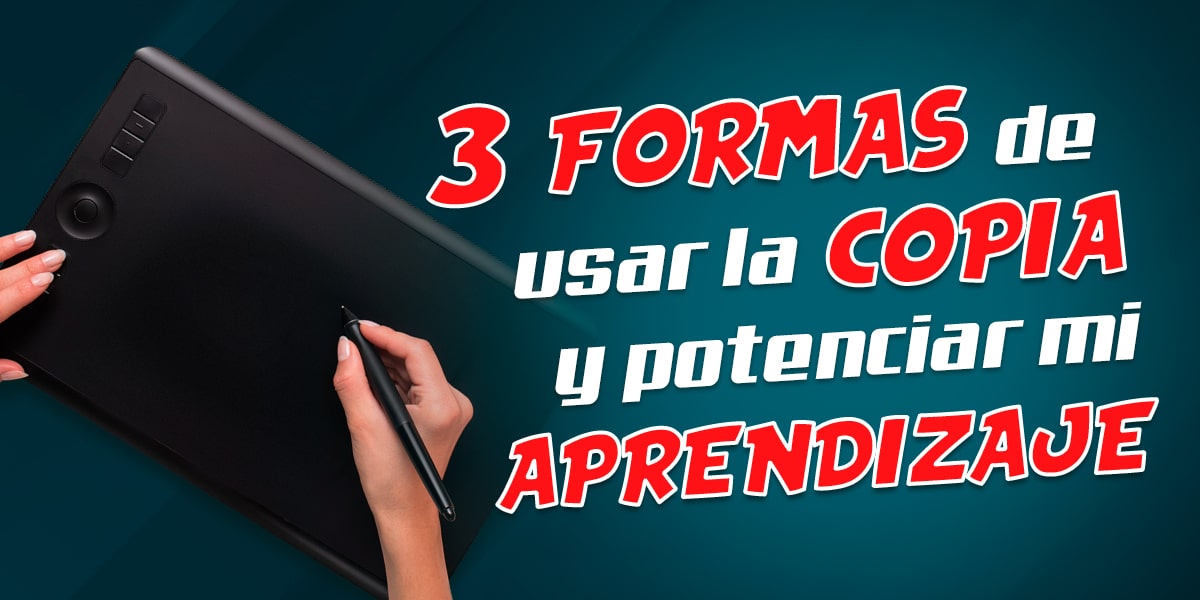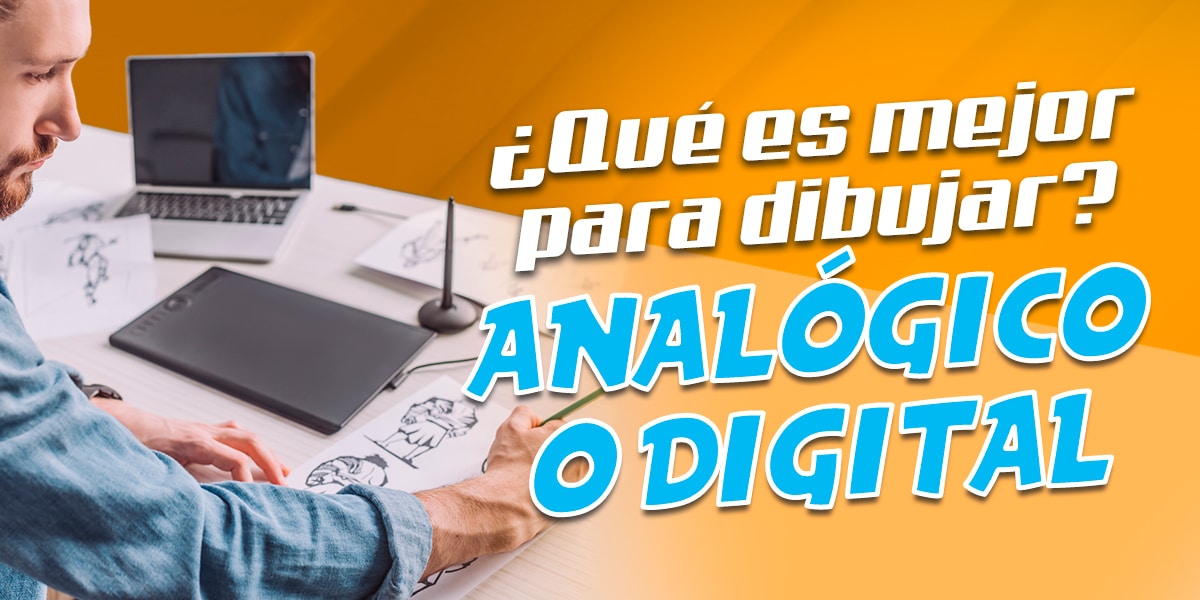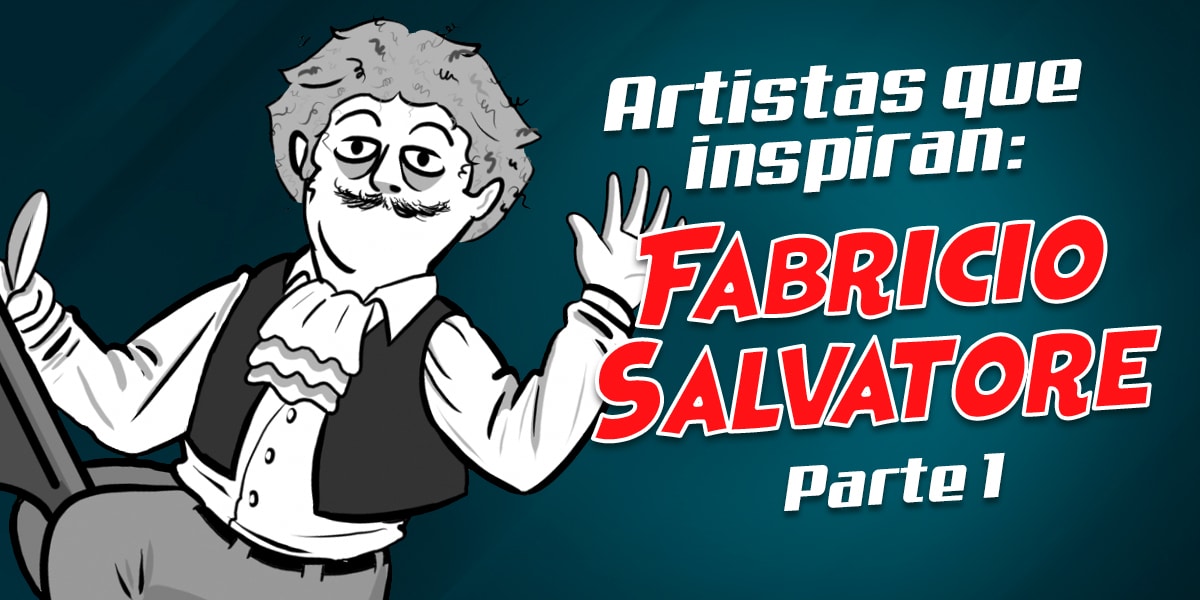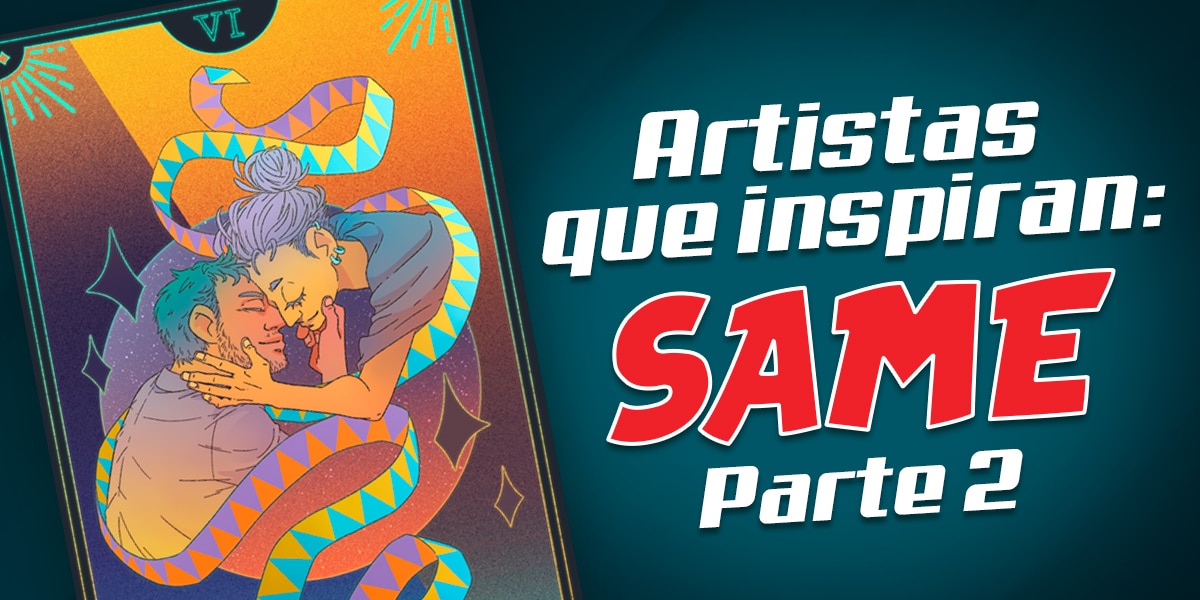3 formas de usar la copia beneficiando mi aprendizaje
¿Alguna vez te has preguntado cómo los grandes artistas llegaron a dominar su oficio? La respuesta podría sorprenderte: muchos comenzaron copiando obras de otros. Pero no te confundas, no hablamos de plagio, sino de una poderosa herramienta de aprendizaje que ha sido utilizada durante siglos. En este artículo, te revelaremos cómo aprovechar al máximo la práctica de la copia para impulsar tu desarrollo artístico.
Desde los primeros trazos en las cavernas hasta los cuadernos escolares llenos de personajes de anime, la copia ha sido una constante en la evolución del arte. Sin embargo, existe una gran diferencia entre copiar sin propósito y hacerlo de manera inteligente para mejorar tus habilidades. Prepárate para descubrir cómo transformar este ejercicio aparentemente simple en un catalizador para tu crecimiento como artista.
Por Ferrari
El poder oculto de la copia: Desbloquea tu potencial artístico
Imagina por un momento que eres un arqueólogo del arte, excavando en las profundidades de la historia humana. Te encuentras frente a una pared de caverna, admirando las primeras expresiones artísticas de nuestros ancestros. Esos dibujos primitivos de escenas de caza y animales no son solo decoraciones; son los primeros ejemplos de cómo los humanos aprendieron a representar su mundo a través del arte.
Avancemos miles de años en el tiempo. Ahora estás en un aula moderna, rodeado de estudiantes garabateando frenéticamente en sus cuadernos. ¿Qué ves? Probablemente, decenas de versiones de los últimos personajes de anime o superhéroes de moda. Esta escena, aparentemente trivial, es en realidad un testimonio de cómo el instinto de copiar sigue vivo en nosotros, impulsando nuestro aprendizaje artístico de manera casi instintiva.
Pero aquí está el secreto: copiar no es solo reproducir líneas y formas. Es un viaje de descubrimiento, una forma de entrenar tu ojo y tu mano para comprender la esencia de lo que ves. Cuando copias, no estás simplemente imitando; estás descifrando el código visual que el artista original utilizó para crear su obra.
Piensa en ello como aprender un nuevo idioma. Al principio, repites palabras y frases sin entender completamente su significado. Pero con el tiempo, comienzas a captar las sutilezas, la gramática, y finalmente, puedes expresarte con fluidez. De la misma manera, copiar obras de arte te ayuda a desarrollar tu “vocabulario visual”, permitiéndote eventualmente crear tus propias “frases” artísticas únicas.
Sin embargo, es crucial entender que la copia es solo el primer paso en tu viaje artístico. Es como aprender a caminar antes de correr. Nadie se convierte en un “maestro del dibujo” simplemente por lograr copias precisas de sus personajes favoritos. La verdadera magia ocurre cuando usas esas habilidades como trampolín para saltar hacia tu propia creatividad.
Así que, la próxima vez que te encuentres copiando un dibujo, recuerda: no estás solo reproduciendo una imagen. Estás participando en una tradición milenaria de aprendizaje artístico, descifrando los secretos de los maestros y preparándote para crear tu propio legado visual. ¿Listo para llevar tus habilidades al siguiente nivel? Descubre cómo aquí.
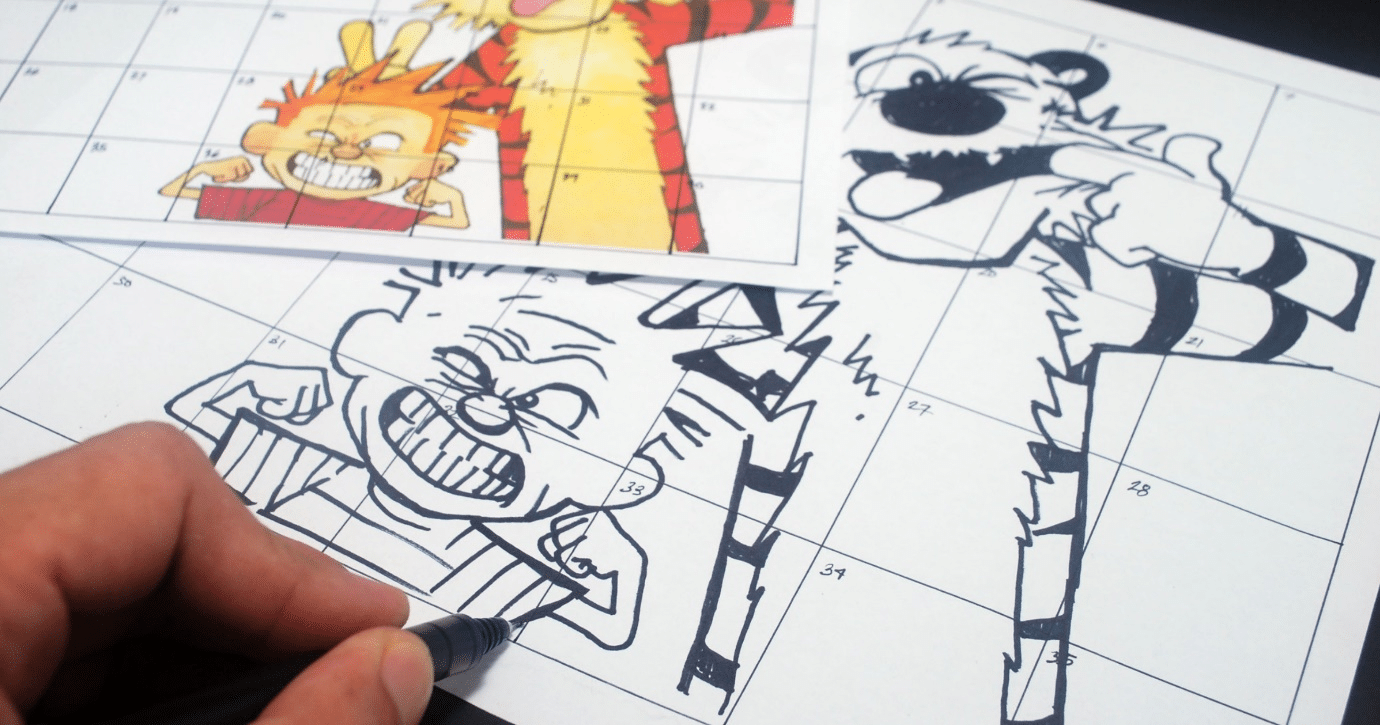
Experimenta y evoluciona: El arte de probar nuevas herramientas
¿Recuerdas la emoción de abrir una nueva caja de lápices de colores cuando eras niño? Ese sentimiento de posibilidades infinitas no tiene por qué desaparecer solo porque has crecido. De hecho, ahora es el momento perfecto para reavivarlo y llevarlo a nuevas alturas.
Imagina que eres un chef experimentado. No te limitas a usar siempre los mismos utensilios, ¿verdad? De la misma manera, como artista en desarrollo, es crucial que explores más allá de tu zona de confort. Olvídate por un momento de tu fiel lápiz HB y atrévete a sumergirte en un mundo de posibilidades creativas.
¿Qué tal si intentas capturar la esencia de tu personaje favorito con acuarelas? O quizás podrías experimentar con la textura que ofrece un trozo de carboncillo. ¿Y qué hay de esos marcadores que has estado guardando para una “ocasión especial”? Bueno, ¡esa ocasión es ahora!
No te preocupes si al principio tus resultados no son perfectos. Recuerda, el objetivo aquí no es crear una réplica exacta, sino explorar y descubrir. Cada nueva herramienta que pruebes te enseñará algo único sobre el proceso creativo. Las acuarelas te mostrarán cómo fluye el color, los pasteles te enseñarán sobre la mezcla y la textura, mientras que las plumas te desafiarán a ser preciso y decidido en tus trazos.
Piensa en cada intento como un experimento científico. Observa cómo reacciona cada material en el papel. ¿Cómo cambia la apariencia de tu dibujo cuando usas un pincel grueso en lugar de uno fino? ¿Qué efectos puedes lograr superponiendo diferentes medios? Cada “fracaso” es en realidad una lección valiosa que te acerca un paso más a encontrar tu estilo único.
Además, esta exploración no solo mejorará tus habilidades técnicas, sino que también estimulará tu creatividad de maneras inesperadas. Podrías descubrir que amas la imprevisibilidad de la tinta china o que tienes un talento natural para el collage. Estas revelaciones podrían abrir puertas a nuevas formas de expresión artística que nunca habías considerado antes.
Recuerda, el arte no se trata solo del resultado final, sino del viaje de descubrimiento. Cada nueva herramienta que pruebes es una oportunidad para crecer y evolucionar como artista. Así que la próxima vez que te sientas estancado o aburrido con tu rutina de dibujo habitual, da clic aquí para explorar nuevas técnicas y materiales que revolucionarán tu arte. ¡Nunca sabes qué maravillas podrías crear!
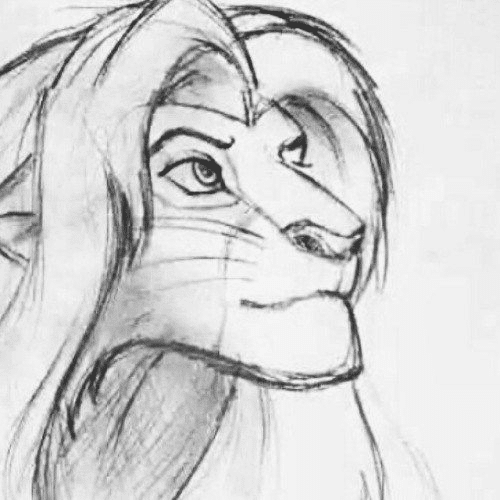
La anatomía del arte: Domina la estructura y las proporciones
Imagina por un momento que eres un arquitecto. No construirías un rascacielos empezando por la fachada, ¿verdad? De la misma manera, un dibujo sólido no comienza con los detalles superficiales, sino con una estructura fuerte y proporciones equilibradas. Esta es la verdadera esencia del arte de copiar de manera efectiva.
Cuando te enfrentas a una imagen que quieres reproducir, es tentador lanzarte directamente a copiar las líneas que ves. Pero detente un momento y da un paso atrás. Observa la imagen en su totalidad. ¿Cuáles son las formas básicas que la componen? ¿Cómo se relacionan estas formas entre sí?
Tomemos como ejemplo la tarea de dibujar una espada. A primera vista, podrías ver solo una hoja afilada y un mango ornamentado. Pero mira más allá. ¿No es la espada, en su forma más básica, una serie de rectángulos y triángulos conectados? Comienza por estos elementos fundamentales y construye a partir de ahí.
La espada: Un estudio en geometría y proporción
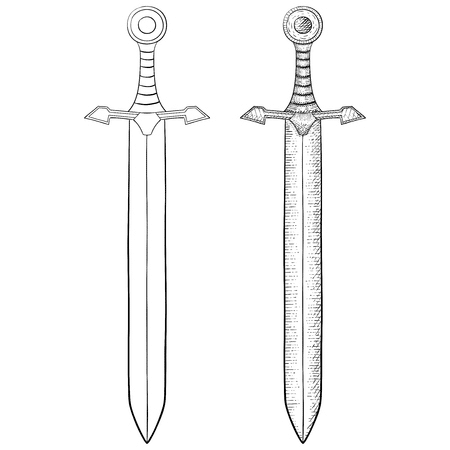
Observa cómo la hoja de la espada es significativamente más larga que el mango. ¿Cuántas veces cabe el mango en la longitud total de la hoja? Esta es la clave para capturar las proporciones correctas. No necesitas medir con precisión milimétrica; confía en tu ojo y en tu intuición. Con práctica, tu capacidad para juzgar estas relaciones mejorará naturalmente.
Ahora, considera la forma general de la espada. ¿Es principalmente rectangular? ¿O tiene más bien una forma de triángulo alargado? Identificar estas formas geométricas básicas te ayudará a establecer una base sólida para tu dibujo.
Un ejercicio útil es comenzar dibujando estas formas geométricas de manera suave en tu papel. Usa líneas ligeras para esbozar un rectángulo para la hoja, tal vez un óvalo para la empuñadura. Estos serán los cimientos sobre los que construirás los detalles más finos.
Este enfoque no solo te ayudará a lograr proporciones más precisas, sino que también te dará una comprensión más profunda de cómo se construyen las formas complejas. Es como aprender el esqueleto antes de añadir los músculos y la piel.
Recuerda, el objetivo no es crear una réplica fotográfica, sino entender y reproducir la esencia de lo que estás viendo. Con el tiempo, este método te permitirá no solo copiar con mayor precisión, sino también crear tus propias composiciones originales con una base estructural sólida.
¿Quieres perfeccionar tus habilidades en proporciones y estructura? Haz clic aquí para acceder a recursos especializados que te ayudarán a dominar estos aspectos fundamentales del dibujo.
El arte de la interpretación: Copiado inteligente para artistas avanzados
Imagina que eres un músico de jazz. Cuando escuchas una pieza clásica, no buscas reproducirla nota por nota, sino capturar su esencia y reinterpretarla con tu propio estilo. De la misma manera, el copiado inteligente en el arte visual va mucho más allá de la simple reproducción; es un ejercicio de comprensión profunda y reinterpretación creativa.
Esta técnica avanzada es como descifrar un código secreto dejado por los maestros del arte. No se trata solo de ver lo que está en la superficie, sino de entender las decisiones que el artista tomó en cada paso del proceso creativo. Es como ser un detective artístico, buscando pistas sobre composición, uso del color, manejo de la luz y sombra, y mucho más.
Cuando te enfrentas a una obra para realizar un copiado inteligente, comienza por “leer” la imagen. Observa cómo el artista ha dividido el espacio. ¿Dónde están los puntos focales? ¿Cómo guía el artista tu mirada a través de la composición? Fíjate en cómo interactúan los diferentes elementos entre sí y con el fondo.
Presta especial atención a los contrastes tonales. ¿Dónde ha colocado el artista las áreas más claras y más oscuras? Estos contrastes no solo crean profundidad y volumen, sino que también pueden dirigir la atención del espectador a áreas específicas de la obra.
A medida que comienzas a reproducir la obra, resiste la tentación de copiar línea por línea. En su lugar, trata de descomponer la imagen en sus elementos fundamentales. Imagina que estás desmontando un reloj complejo para entender cómo funciona cada engranaje. Luego, cuando vuelvas a montarlo (es decir, a dibujar), tendrás una comprensión mucho más profunda de cómo se relacionan todas las piezas.
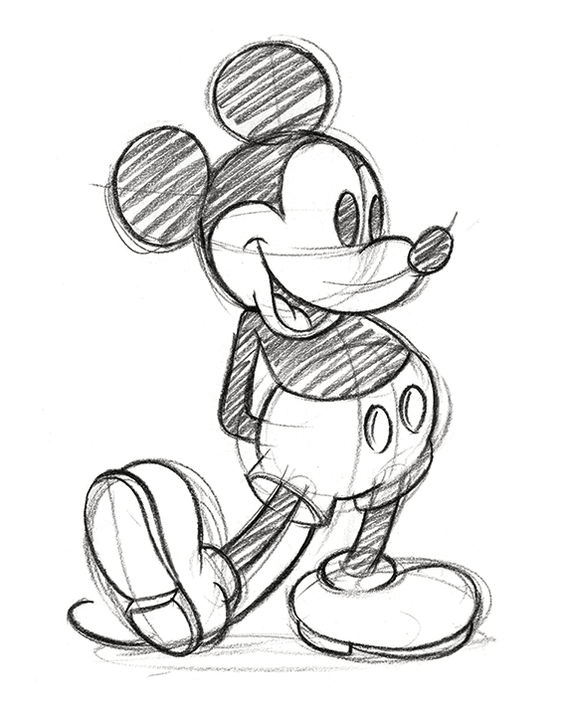
Este proceso te permitirá no solo reproducir la obra, sino también entender las decisiones artísticas que hay detrás de ella. ¿Por qué el artista eligió ese ángulo específico? ¿Qué efecto tiene la paleta de colores en el tono emocional de la pieza? Estas son las preguntas que te ayudarán a profundizar en tu análisis y, en última instancia, a mejorar tu propia práctica artística.
Recuerda, el objetivo del copiado inteligente no es crear una réplica exacta, sino utilizar la obra original como un trampolín para tu propio crecimiento artístico. Es una oportunidad para experimentar con técnicas que quizás no hayas probado antes, para entender cómo otros artistas resuelven problemas visuales, y para incorporar nuevas herramientas a tu propio repertorio creativo.
A medida que practiques el copiado inteligente, notarás que tu percepción visual se agudiza. Comenzarás a ver detalles que antes pasabas por alto, no solo en las obras que copias, sino en todo lo que te rodea. Esta habilidad mejorada de observación es invaluable para cualquier artista, ya sea que estés trabajando en una copia o en una creación original.
¿Estás listo para llevar tu arte al siguiente nivel? Explora aquí técnicas avanzadas de análisis y reinterpretación artística que te ayudarán a dominar el arte del copiado inteligente y a desarrollar tu propio estilo único.
Conclusión: Tu viaje artístico a través de la copia
A lo largo de este artículo, hemos explorado tres poderosas formas de utilizar la copia como una herramienta de aprendizaje y crecimiento artístico. Desde la experimentación con nuevos materiales hasta el dominio de las proporciones yestructuras, y finalmente, el arte del copiado inteligente, cada técnica ofrece una valiosa oportunidad para mejorar tus habilidades y expandir tu visión artística.
Recuerda, el objetivo no es crear réplicas perfectas, sino utilizar cada ejercicio de copia como un trampolín hacia tu propia creatividad. Cada vez que copias una obra, estás descifrando el lenguaje visual del artista original, aprendiendo sus “palabras” y “frases”, para luego incorporarlas a tu propio vocabulario artístico.
La copia, cuando se realiza de manera consciente y reflexiva, se convierte en una poderosa herramienta de aprendizaje. Te permite explorar nuevas técnicas, comprender mejor las decisiones artísticas de otros creadores, y descubrir aspectos de tu propio estilo que quizás no sabías que existían.
A medida que avanzas en tu viaje artístico, recuerda que cada copia que realizas es un paso más hacia tu propia voz creativa única. No tengas miedo de experimentar, de cometer errores, o de producir obras que no sean “perfectas”. Cada trazo, cada intento, es una oportunidad de aprendizaje y crecimiento.
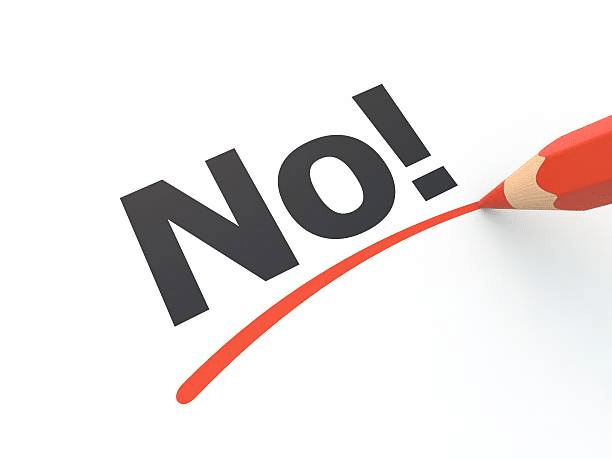
Confía en tu proceso y en tu visión. El arte es un viaje de autodescubrimiento tanto como de habilidad técnica. A medida que desarrolles tu destreza a través de la copia, también estarás desarrollando tu confianza y tu capacidad para expresar tu visión única del mundo.
Recuerda, los grandes artistas no nacieron siendo maestros. Llegaron a donde están a través de la práctica constante, la experimentación valiente y, sí, copiando e interpretando las obras de otros. Ahora es tu turno de seguir sus pasos y, quién sabe, tal vez un día serán tus obras las que otros artistas aspiren a copiar e interpretar.
¿Listo para dar el siguiente paso en tu viaje artístico? Descubre recursos adicionales y técnicas avanzadas aquí para continuar desarrollando tus habilidades y encontrar tu voz artística única.
Palabras finales: Tu camino hacia la maestría artística
Al concluir nuestro viaje a través del arte de la copia, es importante reflexionar sobre el poder transformador de esta práctica. Hemos explorado cómo la copia puede ser mucho más que una simple reproducción; es una puerta de entrada a un mundo de posibilidades creativas y crecimiento artístico.
Comenzamos viendo cómo la experimentación con nuevos materiales puede abrir horizontes inesperados en tu arte. Cada nueva herramienta que pruebas es una oportunidad para descubrir técnicas innovadoras y formas únicas de expresión. No subestimes el poder de salir de tu zona de confort; a menudo, es allí donde ocurren los mayores avances creativos.
Luego, profundizamos en la importancia de comprender las estructuras y proporciones fundamentales. Este conocimiento es la base sobre la cual se construye todo gran arte. Al dominar estos aspectos, no solo mejorarás tu capacidad para copiar con precisión, sino que también fortalecerás tu habilidad para crear composiciones originales sólidas y equilibradas.
Finalmente, exploramos el concepto del copiado inteligente, una técnica que va más allá de la simple reproducción para adentrarse en el análisis profundo y la interpretación creativa. Esta práctica avanzada te permite no solo aprender de los maestros, sino también desarrollar tu propia voz artística única.
Recuerda, el verdadero poder de la copia no reside en crear duplicados perfectos, sino en utilizarla como una herramienta para el autodescubrimiento y el crecimiento artístico. Cada vez que copias una obra, estás absorbiendo lecciones valiosas sobre composición, técnica y expresión que luego puedes aplicar a tu propio arte original.
A medida que continúes tu viaje artístico, mantén siempre una mente abierta y una actitud de aprendizaje constante. No temas experimentar, cometer errores o desafiar las convenciones. El arte es un camino de exploración continua, y cada trazo que haces te acerca un paso más a descubrir tu verdadero potencial creativo.
Confía en tu instinto artístico y en tu visión única. Recuerda que incluso los más grandes maestros comenzaron como aprendices, copiando y estudiando las obras de otros. Tu viaje es único, y cada copia que haces es una piedra en el camino hacia tu propia maestría artística.
¿Estás listo para llevar tu arte al siguiente nivel? Haz clic aquí para descubrir recursos que impulsarán tu creatividad y te ayudarán a desarrollar tu estilo distintivo. El mundo está esperando ver lo que puedes crear. ¡Es hora de dejar tu marca en el lienzo de la vida!

